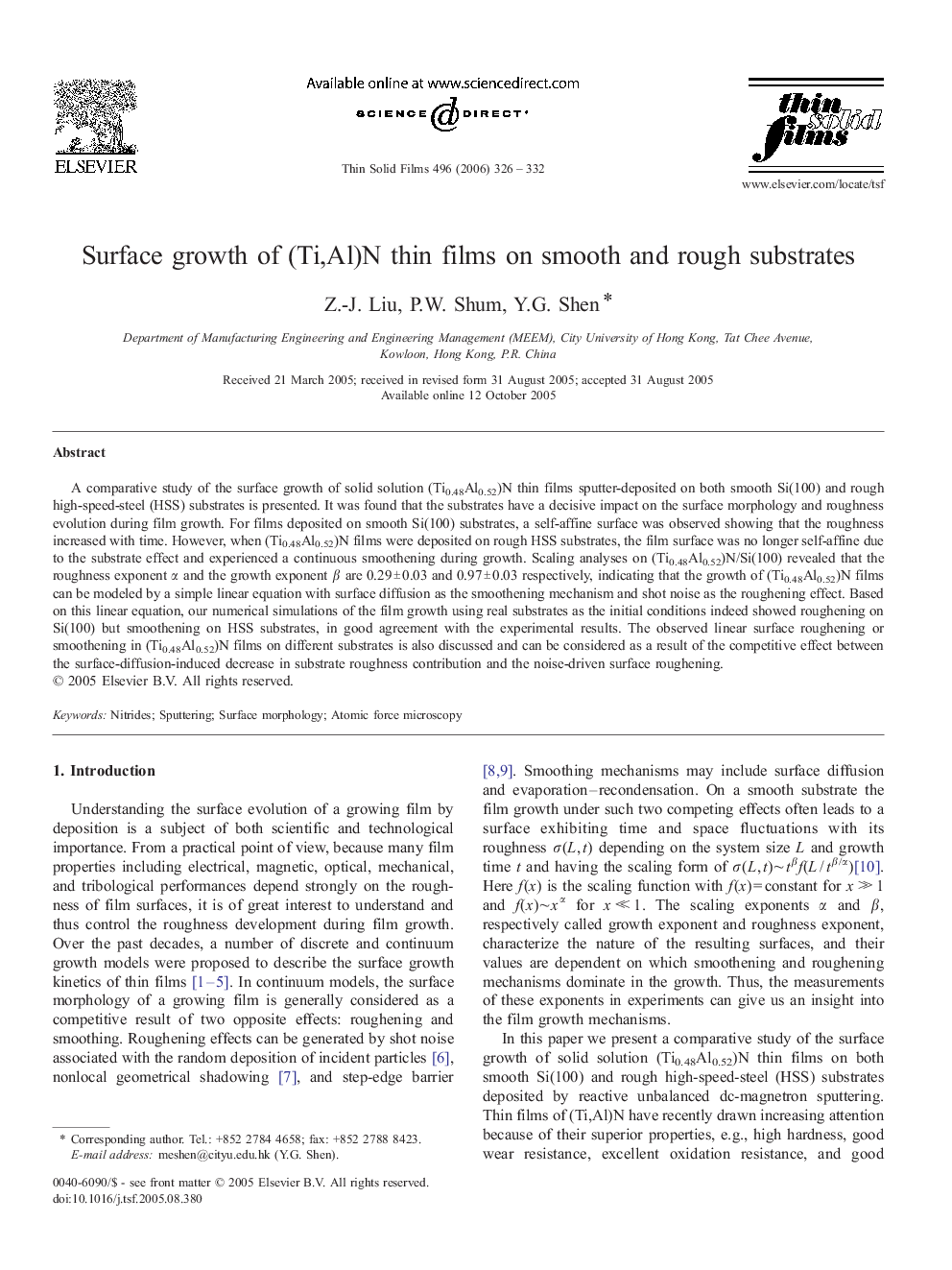| Article ID | Journal | Published Year | Pages | File Type |
|---|---|---|---|---|
| 1676620 | Thin Solid Films | 2006 | 7 Pages |
A comparative study of the surface growth of solid solution (Ti0.48Al0.52)N thin films sputter-deposited on both smooth Si(100) and rough high-speed-steel (HSS) substrates is presented. It was found that the substrates have a decisive impact on the surface morphology and roughness evolution during film growth. For films deposited on smooth Si(100) substrates, a self-affine surface was observed showing that the roughness increased with time. However, when (Ti0.48Al0.52)N films were deposited on rough HSS substrates, the film surface was no longer self-affine due to the substrate effect and experienced a continuous smoothening during growth. Scaling analyses on (Ti0.48Al0.52)N/Si(100) revealed that the roughness exponent α and the growth exponent β are 0.29 ± 0.03 and 0.97 ± 0.03 respectively, indicating that the growth of (Ti0.48Al0.52)N films can be modeled by a simple linear equation with surface diffusion as the smoothening mechanism and shot noise as the roughening effect. Based on this linear equation, our numerical simulations of the film growth using real substrates as the initial conditions indeed showed roughening on Si(100) but smoothening on HSS substrates, in good agreement with the experimental results. The observed linear surface roughening or smoothening in (Ti0.48Al0.52)N films on different substrates is also discussed and can be considered as a result of the competitive effect between the surface-diffusion-induced decrease in substrate roughness contribution and the noise-driven surface roughening.
